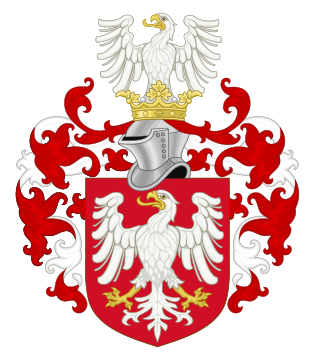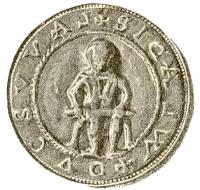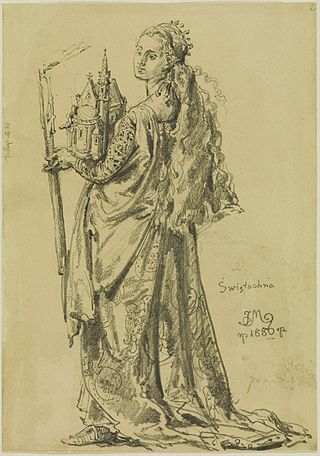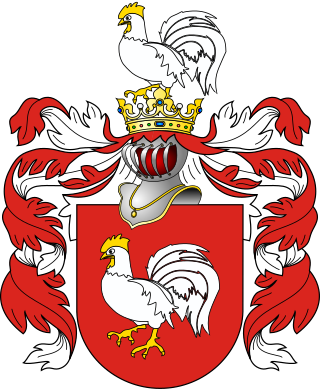
The House of Piast was the first historical ruling dynasty of Poland. The first documented Polish monarch was Duke Mieszko I. The Piasts' royal rule in Poland ended in 1370 with the death of king Casimir III the Great.

Władysław I Herman was the duke of Poland from 1079 until his death.

Bolesław III Wrymouth, also known as Boleslaus the Wry-mouthed, was the duke of Lesser Poland, Silesia and Sandomierz between 1102 and 1107 and over the whole of Poland between 1107 and 1138. He was the only child of Duke Władysław I Herman and his first wife, Judith of Bohemia.

Casimir I the Restorer, a member of the Piast dynasty, was the duke of Poland from 1040 until his death. Casimir was the son of Mieszko II Lambert and Richeza of Lotharingia. He is known as the Restorer because he managed to reunite parts of the Kingdom of Poland after a period of turmoil. He reincorporated Masovia, and conquered Silesia and Pomerania. However, he failed to crown himself King of Poland, mainly because of internal and external threats to his rule.

Przemysł II was the Duke of Poznań from 1257–1279, of Greater Poland from 1279 to 1296, of Kraków from 1290 to 1291, and Gdańsk Pomerania (Pomerelia) from 1294 to 1296, and then King of Poland from 1295 until his death. After a long period of Polish high dukes and two nominal kings, he was the first to obtain the hereditary title of king, and thus to return Poland to the rank of kingdom. A member of the Greater Poland branch of the House of Piast as the only son of Duke Przemysł I and the Silesian Princess Elisabeth, he was born posthumously; for this reason he was brought up at the court of his uncle Bolesław the Pious and received his own district to rule, the Duchy of Poznań in 1273. Six years later, after the death of his uncle, he also obtained the Duchy of Kalisz.

Jakub Świnka was a Polish Catholic priest, the Archbishop of Gniezno and a notable politician, supporter of the idea of unification of all Polish lands under the rule of Władysław I the Elbow-high. His coat of arms was Świnka.

Zbigniew, was a duke of Poland during 1102–1107. He was the first-born son of Władysław I Herman and Przecława, possibly a member of the Prawdzic family.

The Gesta principum Polonorum is the oldest known medieval chronicle documenting the history of Poland from the legendary times until 1113. Written in Latin by an anonymous author, it was most likely completed between 1112 and 1118, and its extant text is present in three manuscripts with two distinct traditions. Its anonymous author is traditionally called Gallus, a foreigner and outcast from an unknown country, who travelled to the Kingdom of Poland via Hungary. Gesta was commissioned by Poland's then ruler, Boleslaus III Wrymouth; Gallus expected a prize for his work, which he most likely received and of which he lived the rest of his life.

The Popielids were a legendary ruling dynasty of either the Polans, Goplans or both tribes, founded by Leszko II. They supposedly ruled the lands of Poland prior to the start of the Piast dynasty. Two Polish families claim descent from the Popielids: the Pobog-Pobodze clan is a junior branch of the Popielid dynasty, rulers of Poland from the 7th through 9th centuries, before the era of Bolescic-Piast dynasty another junioral branch of the Popielid dynasty.
Lechites, also known as the Lechitic tribes, is a name given to certain West Slavic tribes who inhabited modern-day Poland and eastern Germany, and were speakers of the Lechitic languages. Distinct from the Czech–Slovak subgroup, they are the closest ancestors of ethnic Poles and of Pomeranians, Lusatians and Polabians.

Świętosława of Poland was the third wife of Duke Vratislaus II of Bohemia and the first Queen of Bohemia as of 1085.

Kazimierz III of Gniewkowo, was a Polish prince member of the House of Piast, Duke of Inowrocław during 1287-1314, since 1306 vassal of the Kingdom of Poland, Governor of the Duchy of Pomerelia during 1306-1309, after 1314 ruler over Gniewkowo.
Chronica principum Poloniae is a historiographical work written in Silesia, ca, 1382–1386. Its authorship is ascribed to Canon Peter of Byczyna (1328–1389).
Heinrich von Wülzburg was a German Benedictine monk, abbot of the monastery of Wülzburg and Archbishop of Gniezno in Poland.
Galon or Gallon was a bishop of Beauvais and later Bishop of Paris (1104–1116). He was appointed a papal legate in Poland by Paschal II c. 1103.

Kurowie was a Polish noble family, from Mazovia in medieval Poland.
Paweł, was a bishop of Poznań from the 12th century.

Piotr Łabędzi was a Catholic Bishop of Poznań and Archbishop of Gniezno. He was commonly mistaken for his predecessor, the Blessed Bogumił, but recent studies classify them as two different people. Łabędzi most likely came from the powerful Łabędzi family. Nothing is known about his life before consecration. A few years after becoming bishop, he was promoted to Archbishop of Gniezno.

The Biel family - a Polish noble family with the Ostoja coat of arms, belonging to the heraldic Clan Ostoja (Moscics) originating from Błeszno.













